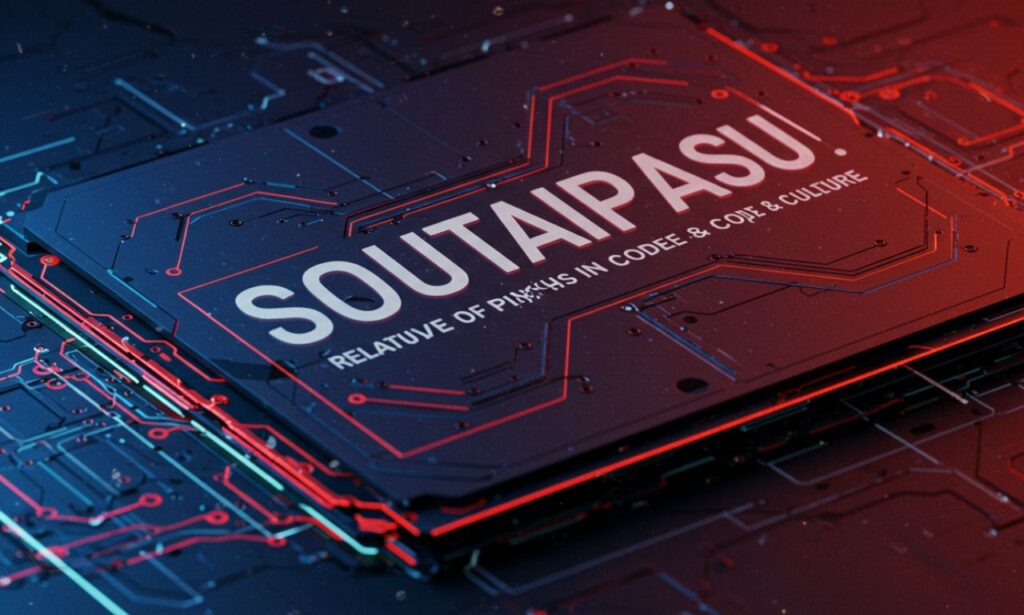In programming and digital design, soutaipasu is a key concept. Yet this term has grown beyond code—rich with metaphorical meaning and cultural resonance. In this article, we’ll explore the technical meaning of soutaipasu, then venture into its symbolic uses in language, art, and identity.
soutaipasu in code: the technical meaning
At its most literal, soutaipasu (相対パス) is the Japanese term for “relative path.” In computer science and web development, a path describes how to navigate from one file or directory to another. A relative path (soutaipasu) is defined in relation to the current location, instead of from the root or full directory tree.
Relative path vs absolute path
To grasp soutaipasu, it helps to contrast it with the absolute path (絶対パス, zettaipasu). The absolute path always references a file or directory by its full, fixed address on the system. A relative path, in contrast, is dynamic—it changes depending on where you are in the system
An absolute path might be, while a relative path (soutaipasu) from index.html to the image would be
The advantage is flexibility: if you move the project folder to another location, the relative paths still work, whereas absolute paths would break unless updated.
Why developers use soutaipasu
-
Portability: Projects can be relocated without breaking links.
-
Readability and maintainability: Paths are shorter and clearer.
-
Team collaboration: Developers working on different file systems can share code with fewer path conflicts.
However, relative paths can get confusing in deeply nested directories, or when the current working directory isn’t obvious. Mistakes often stem from misunderstanding what “current directory” is.
soutaipasu: etaphor, symbolism, and cultural adoption
Beyond its technical roots, soutaipasu has expanded in Japanese online and creative communities as a metaphor for relationships, paths, and mutable connections.
From code to metaphor
Just as a relative path depends on where you stand, soutaipasu as metaphor highlights that meaning, connection, or identity often depends on the context. In fanfiction, online art, or narrative discussion, people sometimes refer to alternative “routes” or relationships as a soutaipasu route—suggesting that a connection only makes sense relative to the characters or circumstances involved.
In this sense, soutaipasu becomes a symbol of nuance, ambiguity, and relational complexity in storytelling.
Use in creative communities
On drawing platforms like Pixiv or in fanfiction archives, creators may tag works “soutaipasu” to indicate alternate paths or relational deviations. These are stories or art that diverge from “canonical” or “absolute” interpretations, embracing fluidity.
Likewise, in online Japanese forums, soutaipasu appears in emotional captions, illustrating states where things are not fixed but contingent, shifting with perspective.
Linguistic and cultural implications
The extension of a technical term into expressive language isn’t new in Japanese: language is rich with layered meaning and indirect expression. soutaipasu as metaphor aligns with Japanese ideas of context, interdependence, and nuance.
Some linguists see this as a modern example of how technical or niche vocabulary can permeate colloquial discourse, becoming part of a cultural lexicon. It also reflects how younger generations often draw metaphors from digital life to describe emotional or relational states.
how soutaipasu is used in daily life & education
Educational contexts
In Japan, students learning programming are introduced early to soutaipasu in HTML, CSS, and general file management. The concept teaches not just technical skill but also a mindset of flexibility.
Some educators even use soutaipasu metaphorically in other subjects, such as ethics or social studies, to discuss how choices and identities are shaped relative to one’s surroundings.
Everyday metaphorical usage
Among younger speakers, especially those engaged in internet and fandom culture, soutaipasu may show up in casual speech, captions, or social media posts. It can stand for a path that depends on someone else, or a relationship that isn’t fixed.
Challenges and misuses
Because soutaipasu is still somewhat niche outside tech and fan circles, misinterpretation or superficial use can occur. Using it without understanding its layered meaning may dilute its power. Also, some may confuse it with absolute or fixed ideas, which misses the essence of “relative” that makes the term rich.
Moreover, technical users must guard against making file paths overly complex or fragile when using relative paths in real-world codebases.
best practices & tips for applying soutaipasu (technical side)
If you’re working with code or file systems, here are some guidelines when using soutaipasu:
-
Plan your folder structure before starting.
-
Use clear, consistent folder and file naming.
-
Keep nesting levels modest—don’t make paths too deep.
-
Document your directory logic, so others know the context.
-
After moving or copying the project, test all links and references.
-
Use version control systems (like Git) so path issues are easier to manage.
-
In shared or team projects, establish path conventions early.
These strategies help maintain clarity and robustness when working with relative paths.
why soutaipasu matters beyond code
The journey of soutaipasu from a pure computing term into a cultural metaphor is a fascinating case of linguistic evolution. It shows how digital life influences language and meaning.
-
It bridges the technical and the poetic.
-
It speaks to how contemporary people view identity and relationships—not as fixed, but in relation to others and context.
-
It offers creators a vivid term to discuss alternative connections and non-linear paths.
-
It reminds technologists and users alike that context matters, whether in code or in life.
In a world increasingly shaped by digital interaction, soutaipasu becomes a microcosm: how we navigate files, relationships, stories, and selves depends on where we stand, and what we reference.
conclusion
soutaipasu started as a Japanese term for “relative path,” a staple concept in programming and web development. But over time, it has grown into something richer: a metaphor for relational meaning, narrative flexibility, and context-dependent connections.
Understanding soutaipasu in both its literal and figurative senses gives us insight into how language evolves in the digital age, how we frame relationships and stories, and how technical frameworks can influence culture.
Whether you’re a developer managing files, a creative exploring alternate narratives, or a reader intrigued by linguistic shifts, soutaipasu offers a versatile lens: nothing is absolute; everything is, in some way, a path defined relative to where you are.






